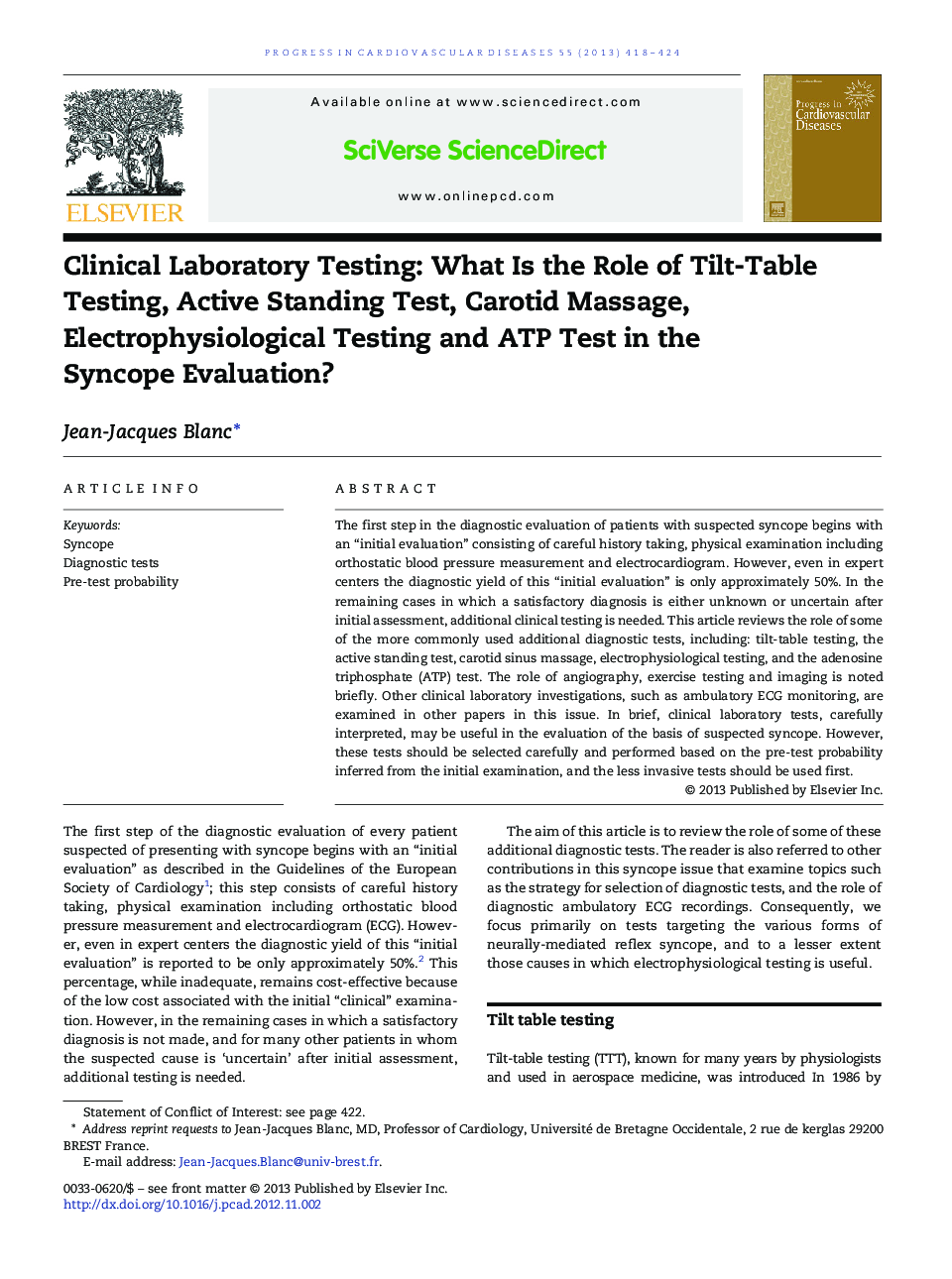| Article ID | Journal | Published Year | Pages | File Type |
|---|---|---|---|---|
| 3006499 | Progress in Cardiovascular Diseases | 2013 | 7 Pages |
The first step in the diagnostic evaluation of patients with suspected syncope begins with an “initial evaluation” consisting of careful history taking, physical examination including orthostatic blood pressure measurement and electrocardiogram. However, even in expert centers the diagnostic yield of this “initial evaluation” is only approximately 50%. In the remaining cases in which a satisfactory diagnosis is either unknown or uncertain after initial assessment, additional clinical testing is needed. This article reviews the role of some of the more commonly used additional diagnostic tests, including: tilt-table testing, the active standing test, carotid sinus massage, electrophysiological testing, and the adenosine triphosphate (ATP) test. The role of angiography, exercise testing and imaging is noted briefly. Other clinical laboratory investigations, such as ambulatory ECG monitoring, are examined in other papers in this issue. In brief, clinical laboratory tests, carefully interpreted, may be useful in the evaluation of the basis of suspected syncope. However, these tests should be selected carefully and performed based on the pre-test probability inferred from the initial examination, and the less invasive tests should be used first.
